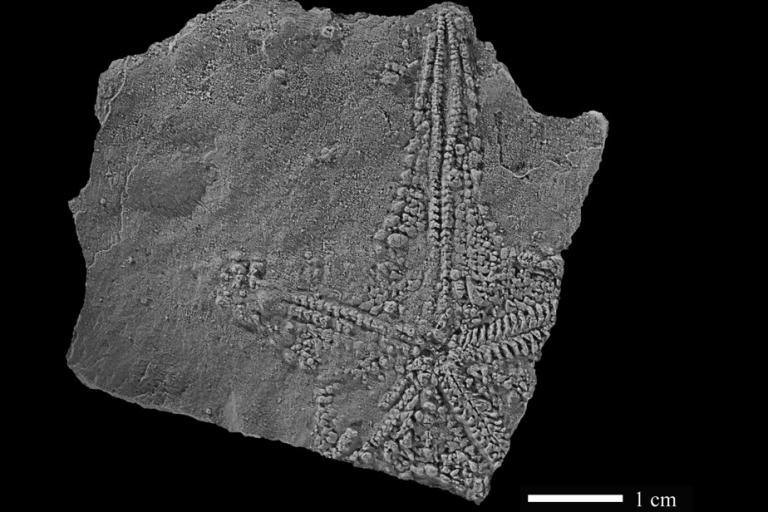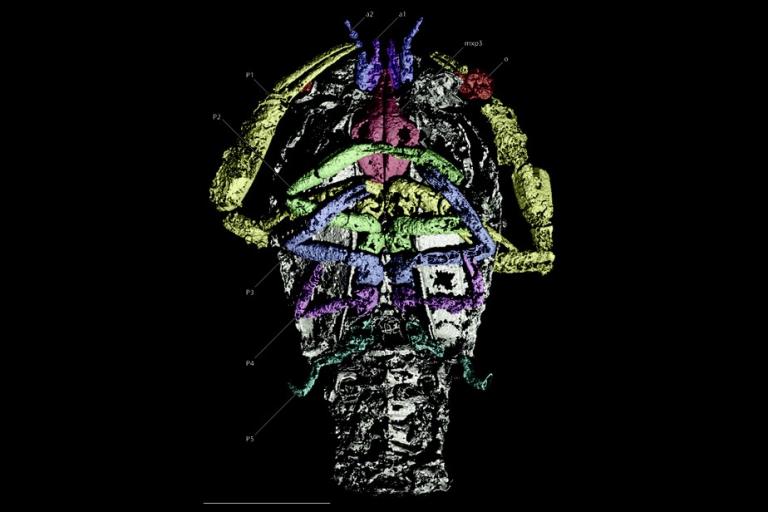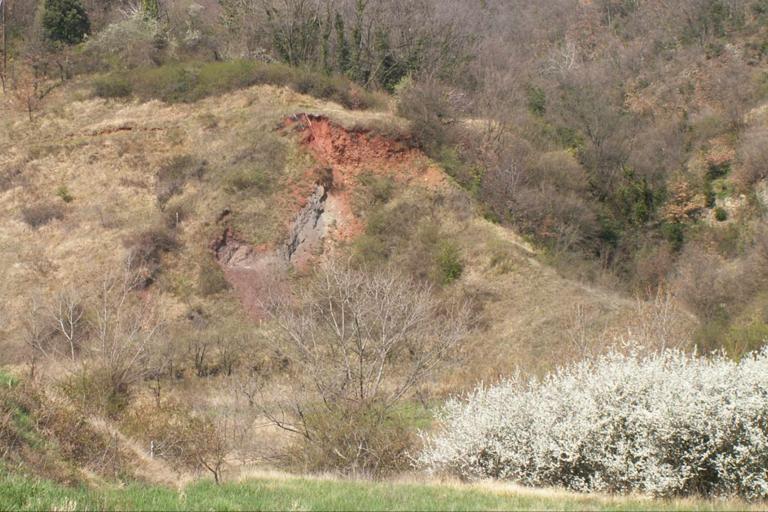Lagerstätten

Sigmesilia Grignon

Sigmesilia Grignon
Exceptional conservation deposits (Konservat-Lagerstätten) are windows into the biodiversity of the past and are a important source of information on a wide range of paleobiological interactions. There are also concentration deposits (Konzentrat-Lagerstätten) which are reference points for their richness in species and/or individuals.
Exceptional conservation deposits (Konservat-Lagerstätten) are windows into the biodiversity of the past and are a important source of information on a wide range of paleobiological interactions. There are also concentration deposits (Konzentrat-Lagerstätten) which are reference points for their richness in species and/or individuals. Each type of deposit provides different and sometimes complementary information. Fossils from several Konservat-Lagerstätten and Konzentrat-Lagerstätten will be analyzed in order to derive systematic, paleobiological, paleoecological and paleoenvironmental information.

Petit homard de récif (Eryma modestiforme) des calcaires lithographiques de Solnhofen, Bavière (Jurassique supérieur).

Asteroidea de la carrière de Tlayua (Albien), Puebla, Mexique.

Bushizheia yangi, arthropode du Cambrien de Chengjiang, Chine. La présence d’appendices céphaliques ressemblant à ceux des radiodontes et d’un corps entièrement tagmatisé questionne l’homologie des appendices céphaliques chez les arthropodes et documente leur évolution lors de l’explosion cambrienne. Longueur du spécimen : 8 cm.

Crevette des calcaires lithographiques de Bavière (Jurassique supérieur). Photographie sous lumière UV

Fruit d'Anacardiaceae provenant de l'Eocène (environ 55 Ma) du Quesnoy dans l'Oise, France. La coupe du fruit (à gauche) permet d'observer les différents tissus cellulaires qui composent le fruit, et la loge centrale contenant la graine.

Palaeopolycheles nantosueltae, crustacé Polychelida du Jurassique moyen du Lagerstätte de La Voulte-sur-Rhône. Contenu dans un nodule encore fermé, il n’est connu que grâce aux rayons X. Les œufs, en jaune, sont accrochés sous l’abdomen du spécimen qui est donc une femelle. Longueur du crustacé : 5 cm.

Asteroidea de la carrière de Tlayua (Albien), Puebla, Mexique.

Modèle 3D d'un crustacé préservé dans un nodule du Lagerstätte de La Voulte-sur-Rhône (Jurassique moyen), vue ventrale (collection MNHN).

Poristoma incisa, détail d'une colonie de bryozoaire, Lutétien, Grignon, Yvelines.

Eurycyde golem, pycnogonide du Jurassique supérieur des Calcaires Lithographiques de Solnhofen, Allemagne. Image microtopographique en fausses couleurs et dessin interprétatif. Diamètre du spécimen : 2,5 cm.

Les terrains du Protérozoïque supérieur de Roumanie constituent un nouveau champ d’investigation pour mieux connaître les caractéristiques du biota édiacarien. Beltanelliformis brunsae, est un des fossiles édiacariens récemment mis à jour. Elément classique du biota édiacarien, cette forme est aujourd’hui attribuée à des colonies cyanobactériennes.
Precambrian deposits from France and Romania yielding Ediacaran organisms preserved by microbial veils. The discovery of possible traces of locomotion in the Precambrian of Romania constitutes a major advance in the knowledge of these primordial faunas.
Cambrian deposits of the Chengjiang fauna (China) delivering exceptionally preserved organisms in fine sediments, visibly flattened, but nevertheless preserving 3D details. These deposits are also among the oldest documenting the Cambrian explosion. Work on the hydrodynamics of some bivalve arthropods has shown a unique swimming pattern that no longer exists in nature today.
Mesozoic deposits delivering arthropod faunas preserved in volume in concretions (La Voulte) and/or in 2D in fine sediments (lithographic limestones of Solnhofen, Lebanon, limestones of Osteno). The discovery of preserved crustaceans with their eggs and reproductive organs has allowed a better understanding of the evolution of reproductive strategies in certain groups since the Middle Jurassic.
Paleogene deposits of the Paris Basin corresponding to exceptional concentrations of molluscs in a regional hotspot context of paleobiodiversity. The spectacular richness of this malacofauna, one of the richest in the world (more than 5000 species), sheds essential light on the knowledge of the Tethyan biodiversity, marked by a recording bias in other regions, the assemblages being less well preserved there.
Residual color patterns of Meso-Cenozoic molluscs: exploitation for the evaluation of biodiversity and for the understanding of pigment diagenesis. The study of shell pigments by fluorescence gives access to the composition of residual pigments via non-intrusive techniques. In Vetigastropoda, it has allowed the precise identification of uro-porphyrins.
Paleoflora with numerous fossils preserved in three dimensions (sometimes down to the cellular level). Fossilized wood, fruits, seeds and flowers from these deposits remain numerous to be studied to complete the description of the flora around the PETM transition.
Origins and processes of exceptional preservation across different Paleozoic, Mesozoic and Cenozoic deposits. Mineralogical and elemental characterization of arthropod soft parts fossilized in carbonate nodules has led to the understanding that exceptional preservation requires, against all expectations, rapid biodegradation of tissues. Moreover, mineralization is determined by the original composition of the tissues.

Carrière de Tlayua (Albien), Puebla, Mexique.

Carrière de Tlayua (Albien), Puebla, Mexique.

Lagerstätte de La Voulte-sur-Rhône, Ardèche, France (Jurassique moyen, Callovien, environ - 165 Ma)

Lagerstätte de Solnhofen, Bavière, Allemagne (Jurassique supérieur, Tithonien, environ -150 Ma)

Lagerstätte d’Eichstätt, Bavière, Allemagne (Jurassique supérieur, Tithonien, environ -150 Ma)

Lagerstätte d’Hadjoula, Liban (Crétacé supérieur, Cénomanien, environ -100 Ma)

Lagerstätte d’En Nammoura, Liban (Crétacé supérieur, Cénomanien, environ -100 Ma)

Lagerstätte de Gara Sbaa, Kem Kem, Maroc (Crétacé supérieur, Cénomanien-Turonian, environ -95 Ma)
Gisements à conservation exceptionnelle du Liban : crustacés, céphalopodes et microfossiles
Exploration de la paléobiodiversité des milieux extrêmes : les suintements froids du Jurassique supérieur du Sud-Est de la France
Photoluminescence des porphyrines utilisée pour révéler des marqueurs colorés préservés chez les Vetigastropoda post-paléozoïques
Les micro- et macro-arthropodes marins du Trias de Slovénie : diversité et paléoenvironnements
Lagerstätten du Crétacé du Liban : arthropodes, céphalopodes et microfossiles
Pyritisation Expérimentale d’Animaux Marins : étude des processus organiques et inorganiques
Acquisition d’images de méso- et microfossiles pour la recherche et les collections virtuelles
Deciphering hidden Information with LUminescence of Vetigastropoda using new Imaging ANalytical methods
Fossilisation et préservation exceptionnelle des Plattenkalks du Liban
La crise du Messinien revisitée : quelle biodiversité des fonds méditerranéens juste avant les dépôts évaporitiques
Étude de la diversité d’un gisement de bois fossiles à préservation exceptionnelle